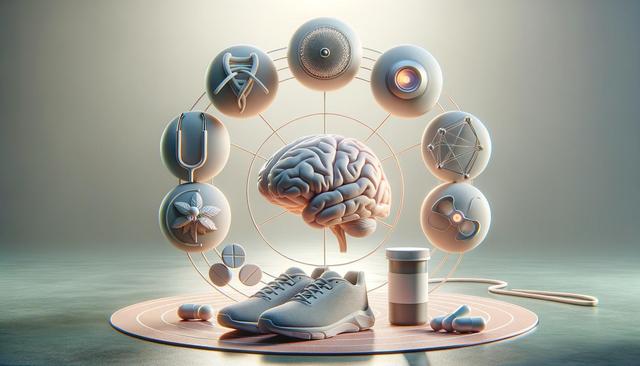Understanding Parkinson’s Disease and Its Challenges
Parkinson’s disease is a progressive neurodegenerative disorder that primarily affects movement. It occurs when nerve cells in the brain that produce dopamine become impaired or die. This leads to symptoms such as tremors, stiffness, slowness of movement, and balance difficulties. As the disease progresses, non-motor symptoms including sleep disturbances, mood disorders, and cognitive changes may also appear. The complexity and variability of symptoms make treatment a multifaceted challenge, often requiring a combination of medical, physical, and lifestyle strategies.
Traditional treatment has primarily focused on managing motor symptoms, but the need for holistic and personalized care is gaining recognition. With ongoing research, new insights are emerging that aim to address both the physical and emotional aspects of the disease. These include not only pharmaceutical approaches but also innovative technologies, physical rehabilitation techniques, and integrative therapies. The growing interest in New Treatment Options for Parkinsons highlights the shift toward more comprehensive care models.
Medications and Pharmacological Developments
Medication remains a central element in the treatment of Parkinson’s disease. The most widely used drug is levodopa, which replenishes dopamine levels in the brain. It is often used in combination with other medications to enhance its effects or manage side effects. However, long-term use may lead to fluctuations in symptom control and the development of involuntary movements known as dyskinesia.
Recent pharmacological advances are aimed at improving consistency in symptom management and reducing side effects. These include:
- Dopamine agonists, which mimic dopamine’s effects in the brain.
- MAO-B inhibitors that slow the breakdown of dopamine.
- COMT inhibitors used to extend the effects of levodopa.
In addition to these, ongoing clinical trials are examining New Treatment Options for Parkinsons that target different mechanisms, such as gene therapies and neuroprotective agents. Although many of these are in experimental stages, they offer promise for more effective long-term management of the disease.
Advances in Surgical and Device-Based Therapies
For individuals who do not respond well to medication or experience significant motor complications, surgical options can provide relief. Deep brain stimulation (DBS) is one of the most established procedures. It involves implanting electrodes in specific areas of the brain to regulate abnormal signals. Patients often experience notable improvements in motor symptoms, and the procedure can reduce the need for medication.
Beyond DBS, other device-assisted treatments are gaining traction among New Treatment Options for Parkinsons. These include:
- Infusion therapies that deliver continuous medication through a pump.
- Wearable devices that monitor movement and adjust therapy accordingly.
- Non-invasive brain stimulation techniques under investigation in clinical trials.
These options are particularly valuable for those with advanced Parkinson’s or those who struggle with medication-related complications. As technology evolves, these tools are becoming more sophisticated, offering tailored approaches to care.
Integrative and Lifestyle-Based Interventions
Complementary strategies play a significant role in managing Parkinson’s symptoms and enhancing quality of life. These interventions are often used alongside conventional medical treatments and focus on the whole person—physically, mentally, and emotionally. They include physical therapy, occupational therapy, speech therapy, and mental health support.
Exercise, in particular, has shown to have a profound impact. Regular physical activity can help maintain mobility, improve balance, and reduce stiffness. Popular forms of exercise for Parkinson’s patients include:
- Stretching and flexibility exercises
- Strength training
- Balance and coordination workouts
- Dance and movement therapy
Diet and nutrition also play a crucial role. A balanced diet rich in antioxidants and fiber can support overall health and may help manage medication side effects. As interest grows in New Treatment Options for Parkinsons, many patients are exploring how lifestyle changes can complement medical treatment for a more holistic approach to care.
Emerging Therapies and Future Outlook
Innovation in Parkinson’s care is rapidly advancing. Researchers are exploring cellular therapies, such as stem cell transplantation, to replace damaged neurons. Gene therapy is another area of interest, aiming to modify genetic factors that contribute to disease progression. These approaches, while largely experimental, represent a new frontier in treatment possibilities.
Digital health technologies are also playing a growing role. Smartphone apps and remote monitoring tools allow for more personalized and adaptive treatment plans. These innovations not only help track symptoms but also enable healthcare providers to adjust interventions in real time.
Among the New Treatment Options for Parkinsons under development, some aim to slow or even halt disease progression. While no cure currently exists, the commitment to research and the expansion of therapeutic strategies offer hope. With continued investment in science and patient care, the future holds greater promise for those living with Parkinson’s disease.



Leave a Reply